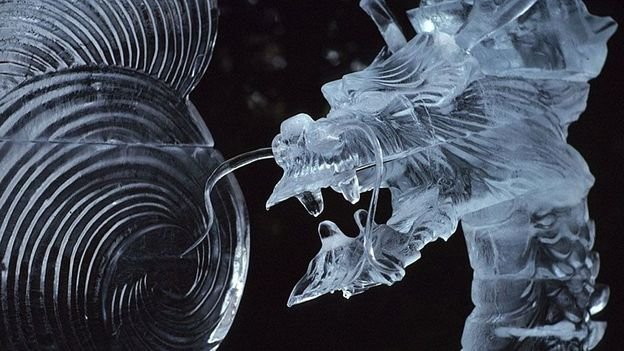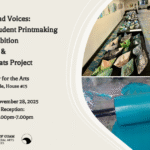
The practice of transforming ice into something beautiful has been around for thousands of years, and wows travellers today with impressive sculpting competitions around the world.
The World Ice Arts
Championships begin in Fairbanks, Alaska on 26 February this year. Like the World
Cup of the ice-sculpting world, the competition attracts artists from across
the globe. Last year, competitors represented countries ranging from Japan and Russia
to Portugal, the United States and the Philippines.
For an idea of just how
detailed, complex and impressive these sculptures are, look no further than
last year’s winner in the “multi-block” (that is, carved from multiple blocks
of ice) competition, titled Prickly
Reception, crafted by a Japanese team led by renowned sculptor Junichi
Nakamura (who won the
gold medal for ice carving at the 1998 Winter Olympics). Nakamura is known
in the ice world for taking risks with his pieces, and Prickly Reception
was no exception, with the ice for the porcupine quills so thin it boggles the
mind that they didn’t break off during the competition. Other sculptures of his
have not been so lucky, with one entry in 2005 collapsing
during the final stages of sculpting.
Artists use such tools
as chainsaws, handsaws, hairdryers, irons and chisels to carve the ice, usually
working in ultra-cold environments such as large walk-in freezers to guard
against melting. A
fascinating Q&A, hosted
by New Orleans-based sculptor Dawson List, offers insight into how professional ice sculpting competitions
are judged, where the ice for sculptures comes from and why it isn’t simply
done by machine.
But from outside the industry, it’s easy to wonder where
this idea of transforming ice into something beautiful came from.
The exact origins of
ice sculpting are murky, though we do know that the practice has been around
for a very long time. Early Inuits travelling across present-day Alaska, Canada
and Greenland started building ice and snow houses for shelter – commonly known
today as igloos – around 4,000 years ago. The uses
and benefits of ice as a resource eventually came to be known all over the
world. As described by ice sculptor Joseph Amendola in his book
Ice Carving Made Easy, written records
dating back to 600 BC reveal that in the highlands of northwest China, farmers
would flood their fields with water, wait for it to freeze, harvest blocks of
ice and then store them in insulated facilities to help preserve perishables
like seafood. And, according to Amendola, in both Ancient Rome and India, the
wealthy began eating and drinking ice mixed with fruit juices as a lavish
dessert – a precursor to ice cream and sorbet.
Along the way, the moulding
and sculpting of ice into different shapes became more sophisticated,
incorporating the use of salt and tools. In the 1600s, for instance, fishermen
in the northeastern Chinese province of Heilongjiang started sculpting lanterns from ice –
freezing water inside buckets, removing the buckets and inserting candles.
Today in Heilongjiang, the capital, Harbin, hosts the annual Harbin Ice and Snow Festival, where the delicately-crafted
ice lanterns are a major highlight.











